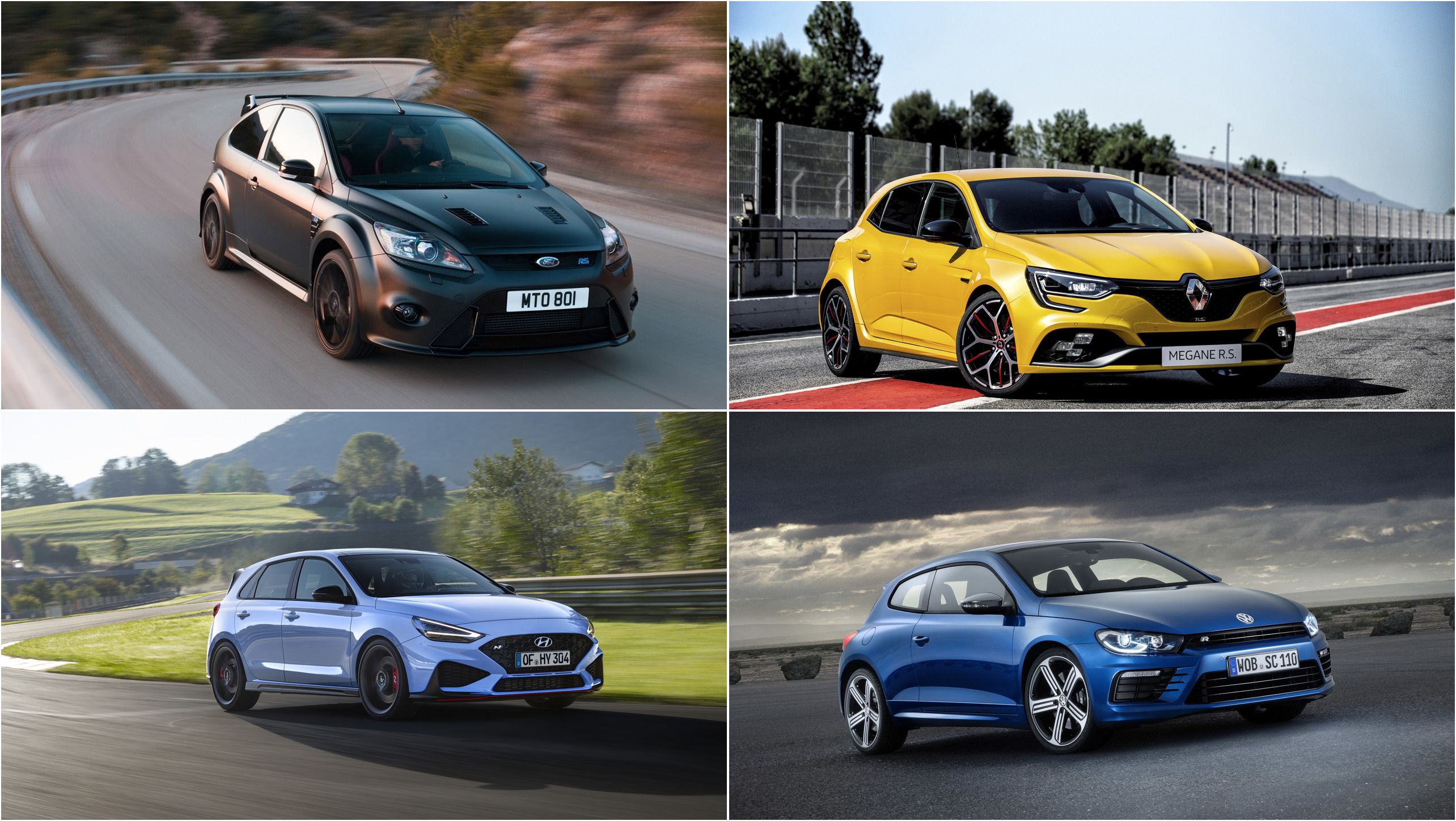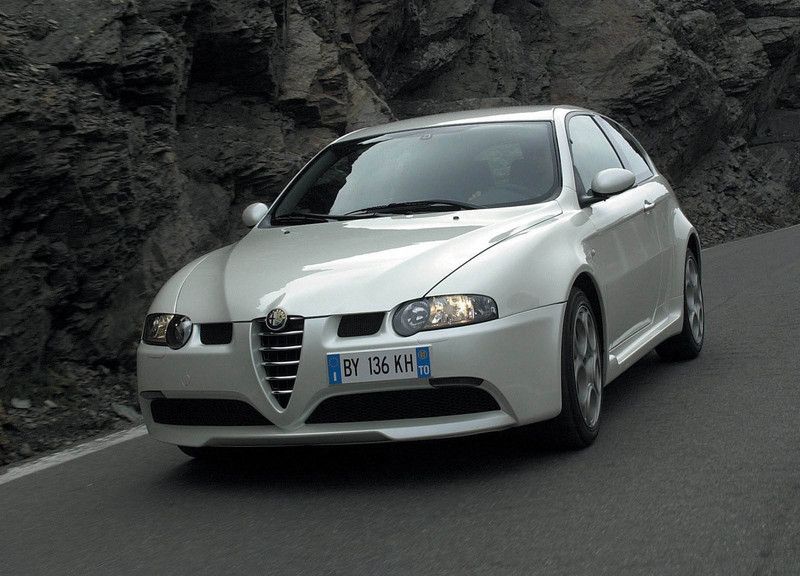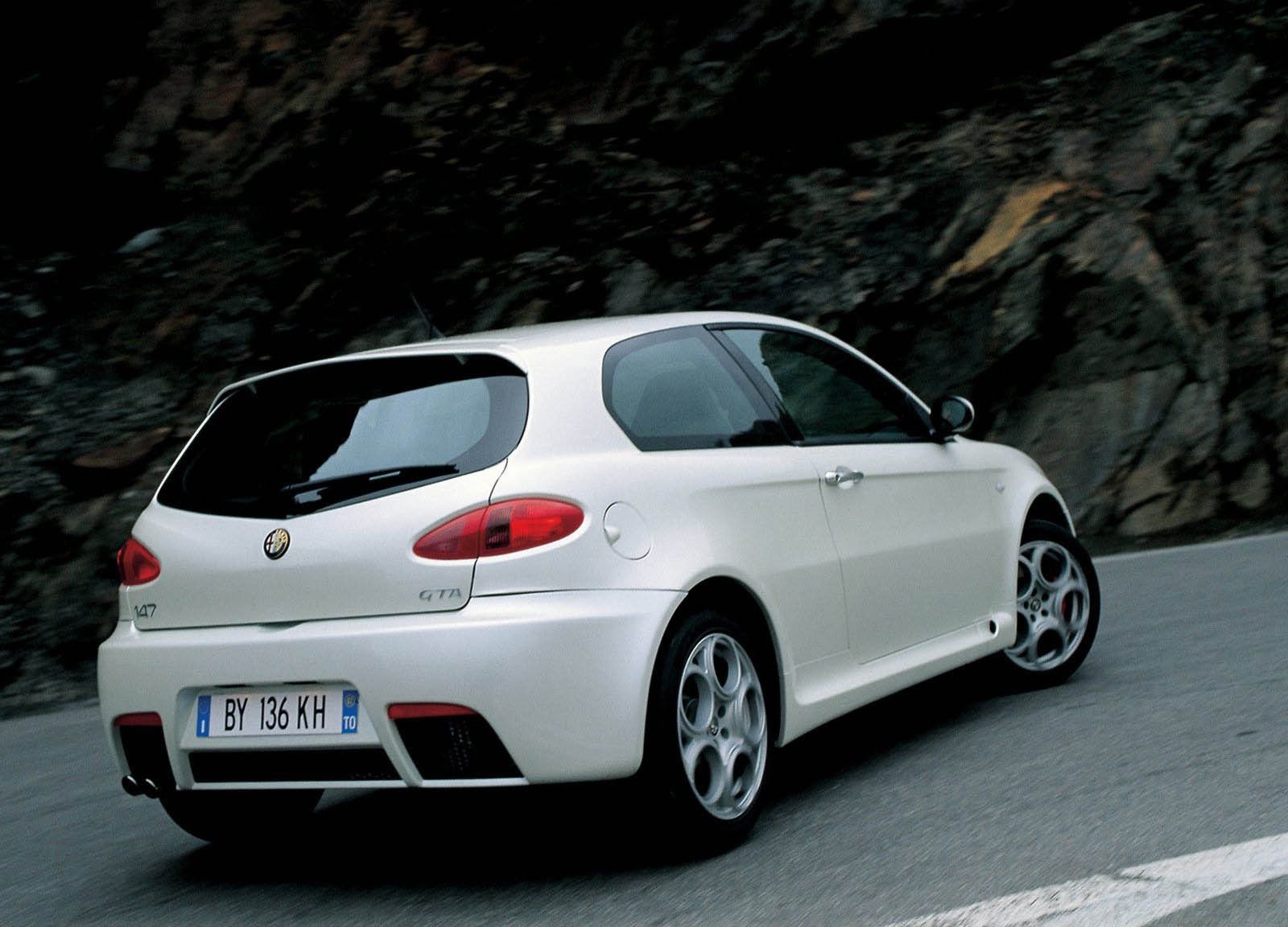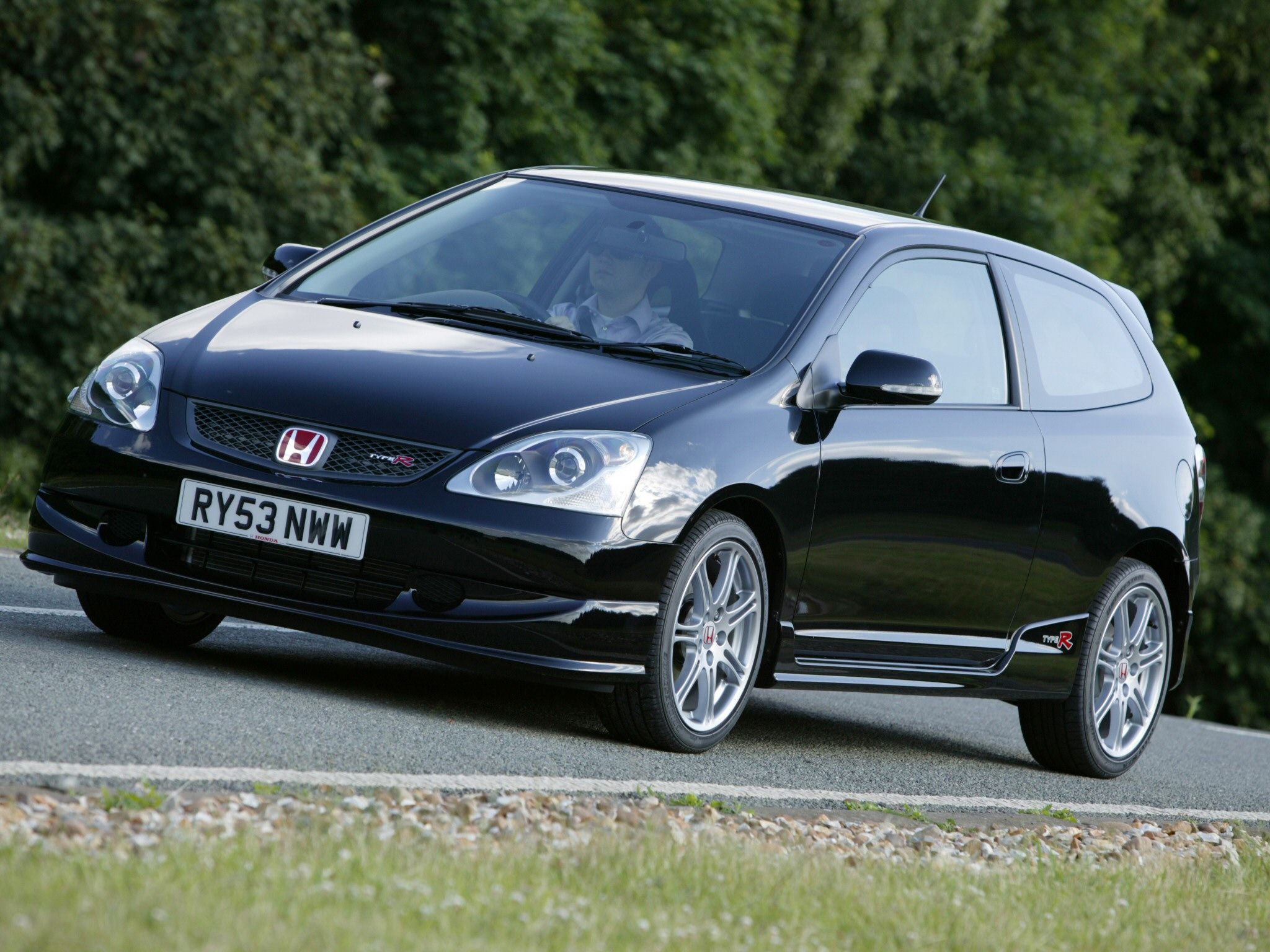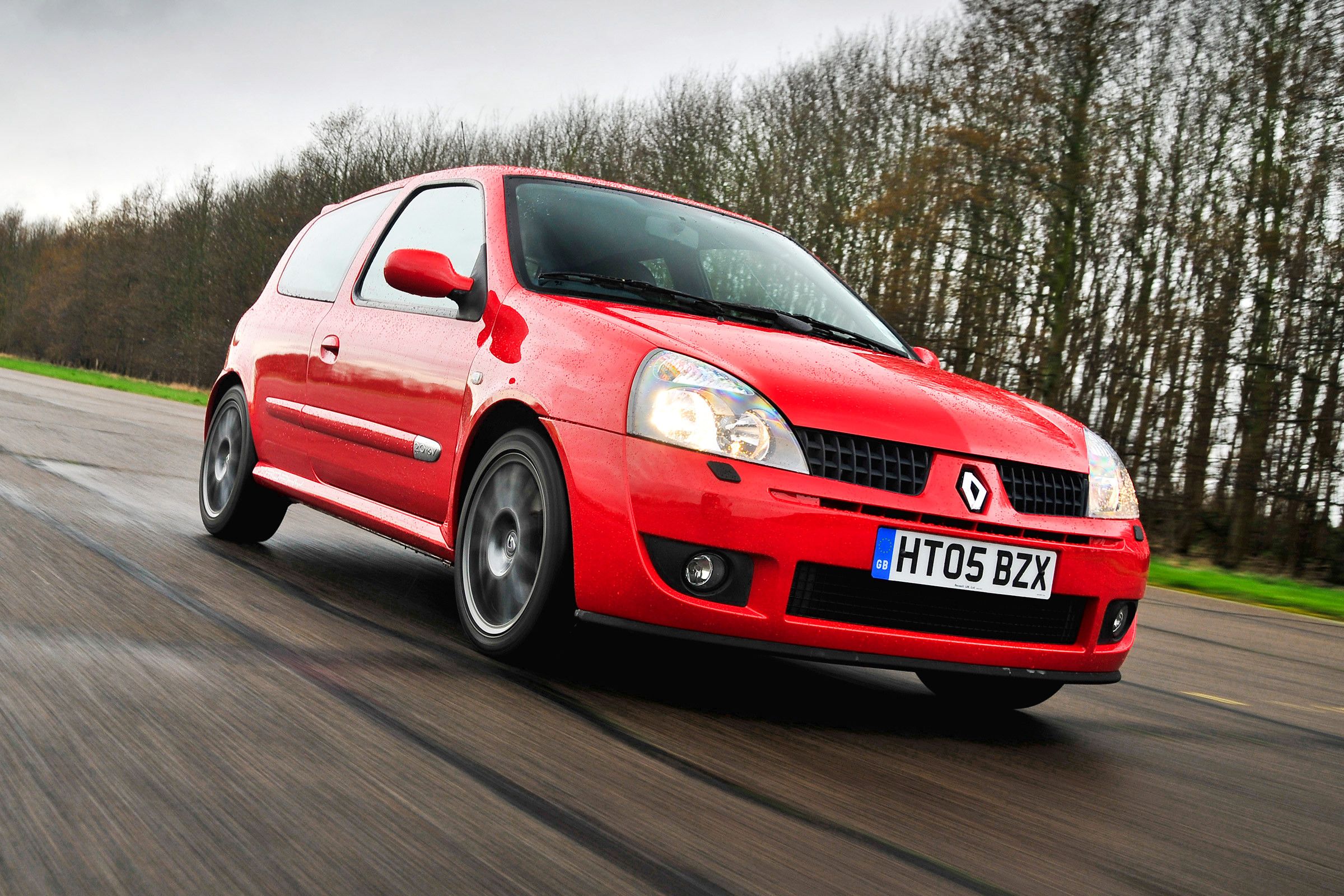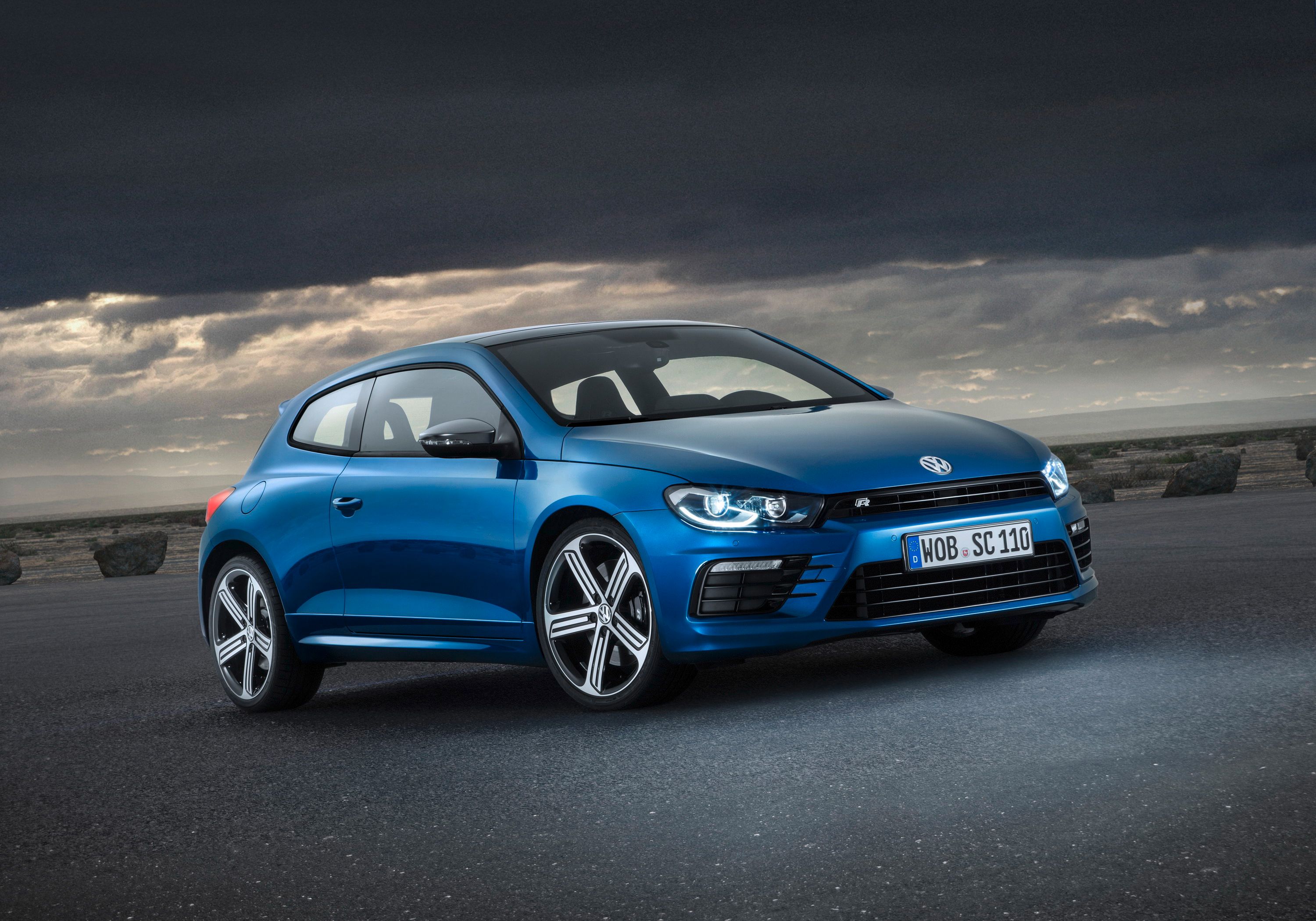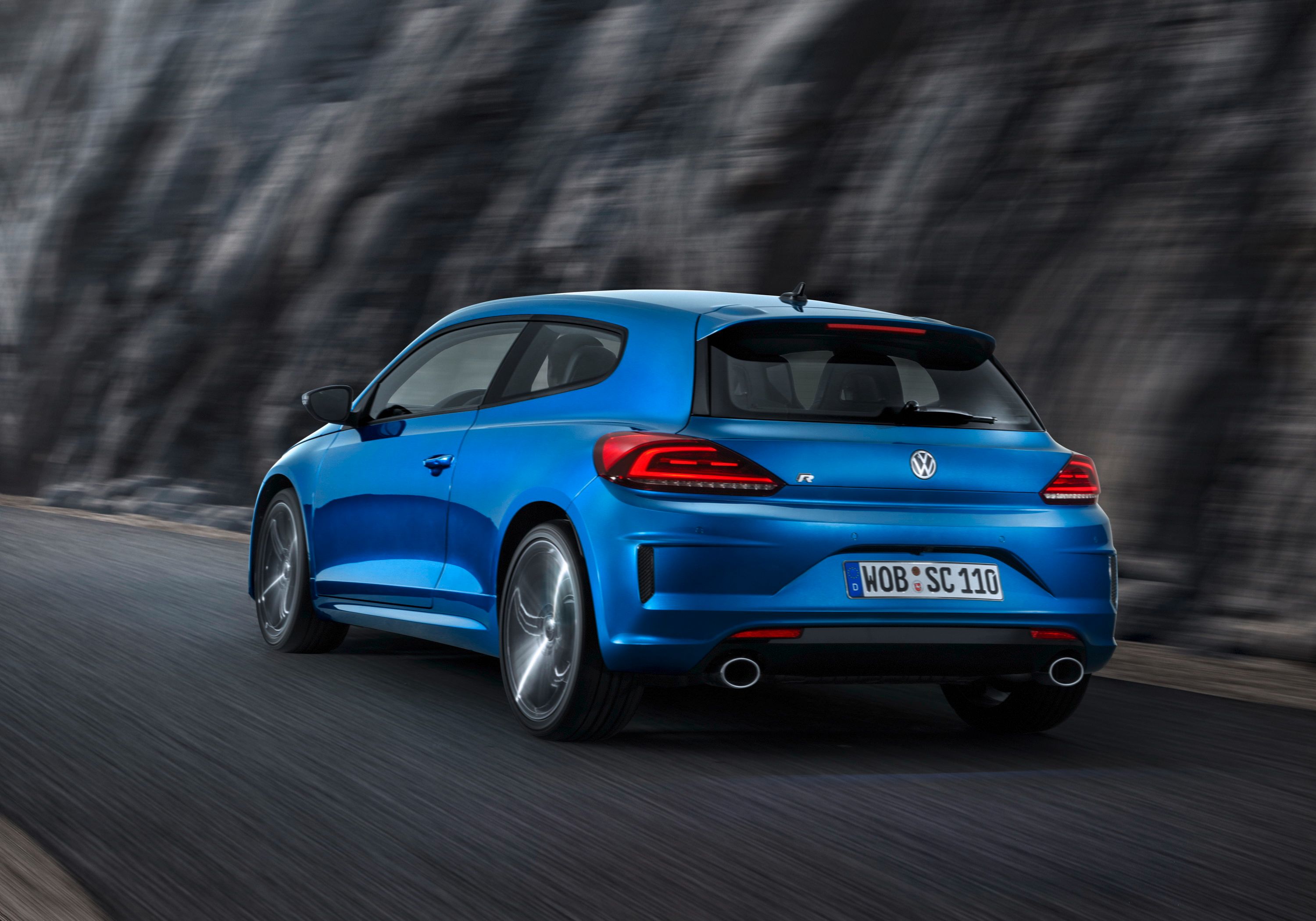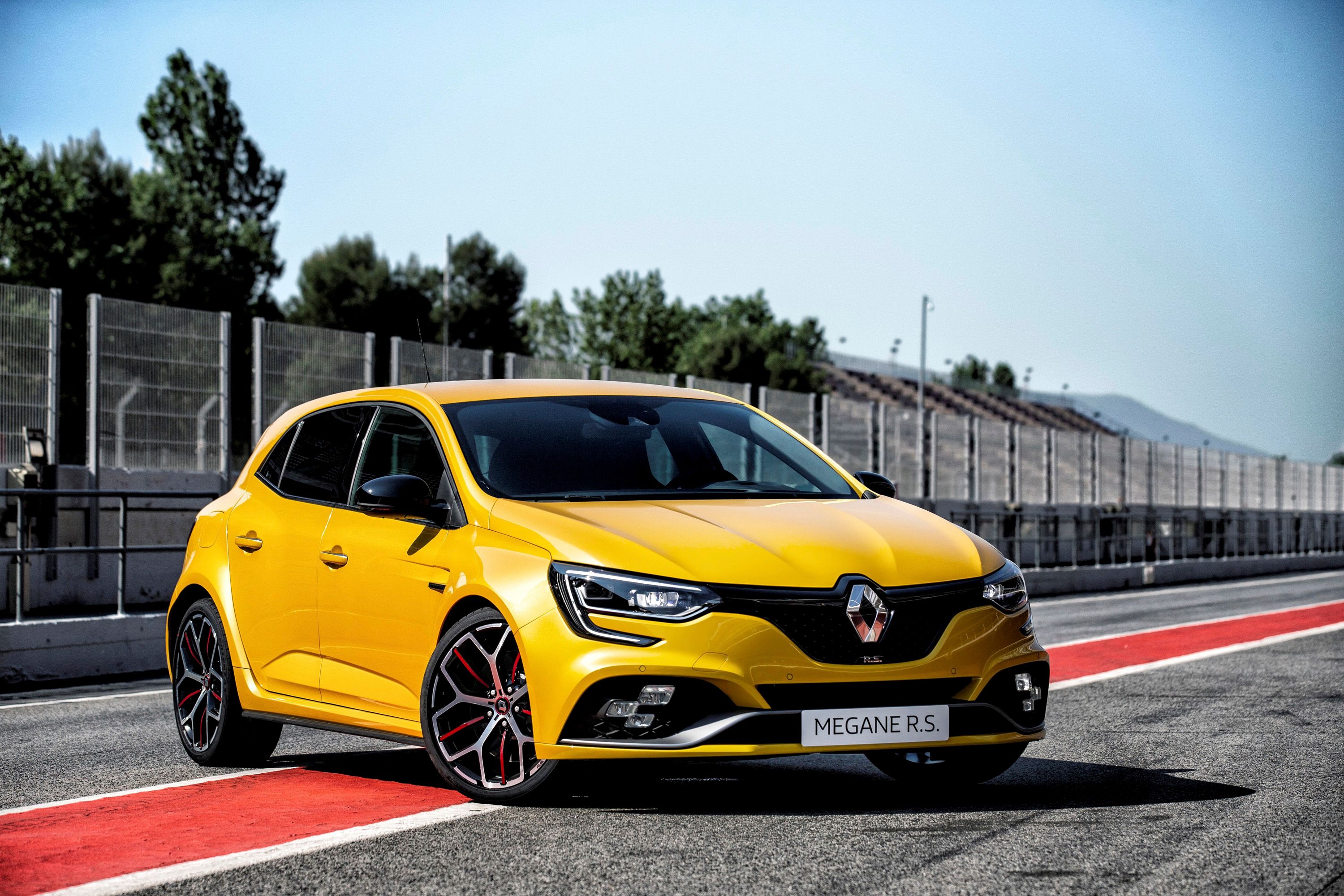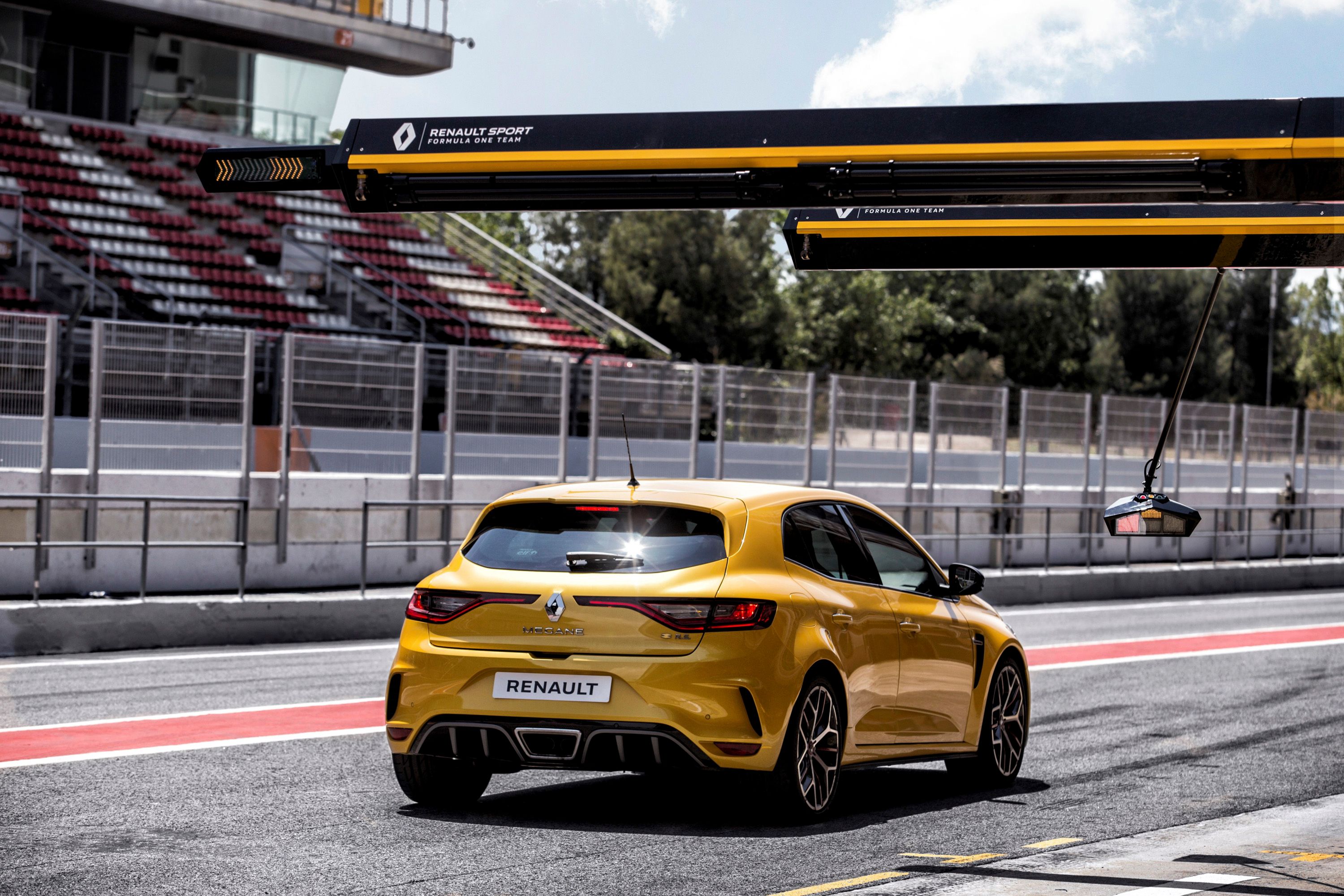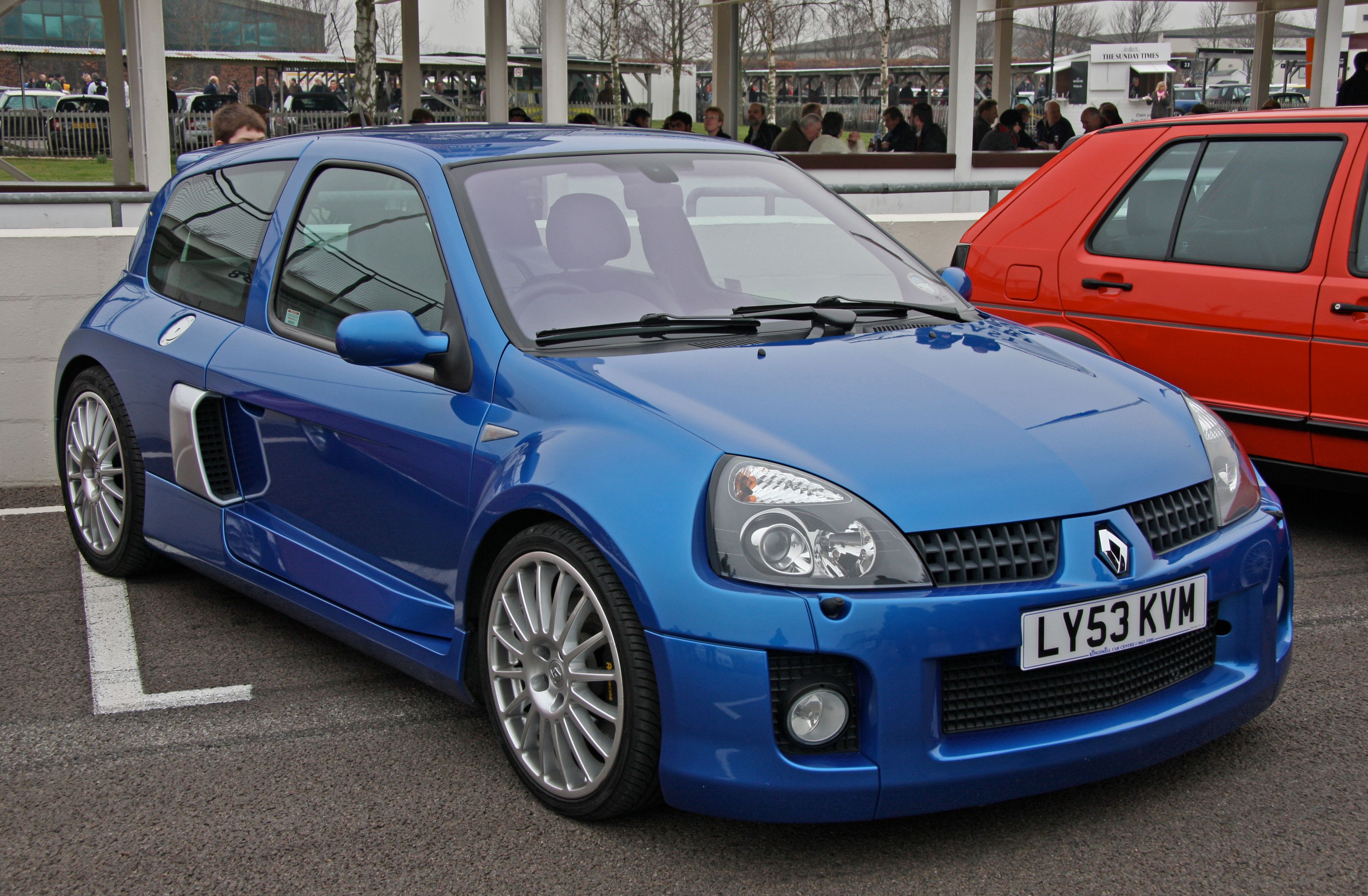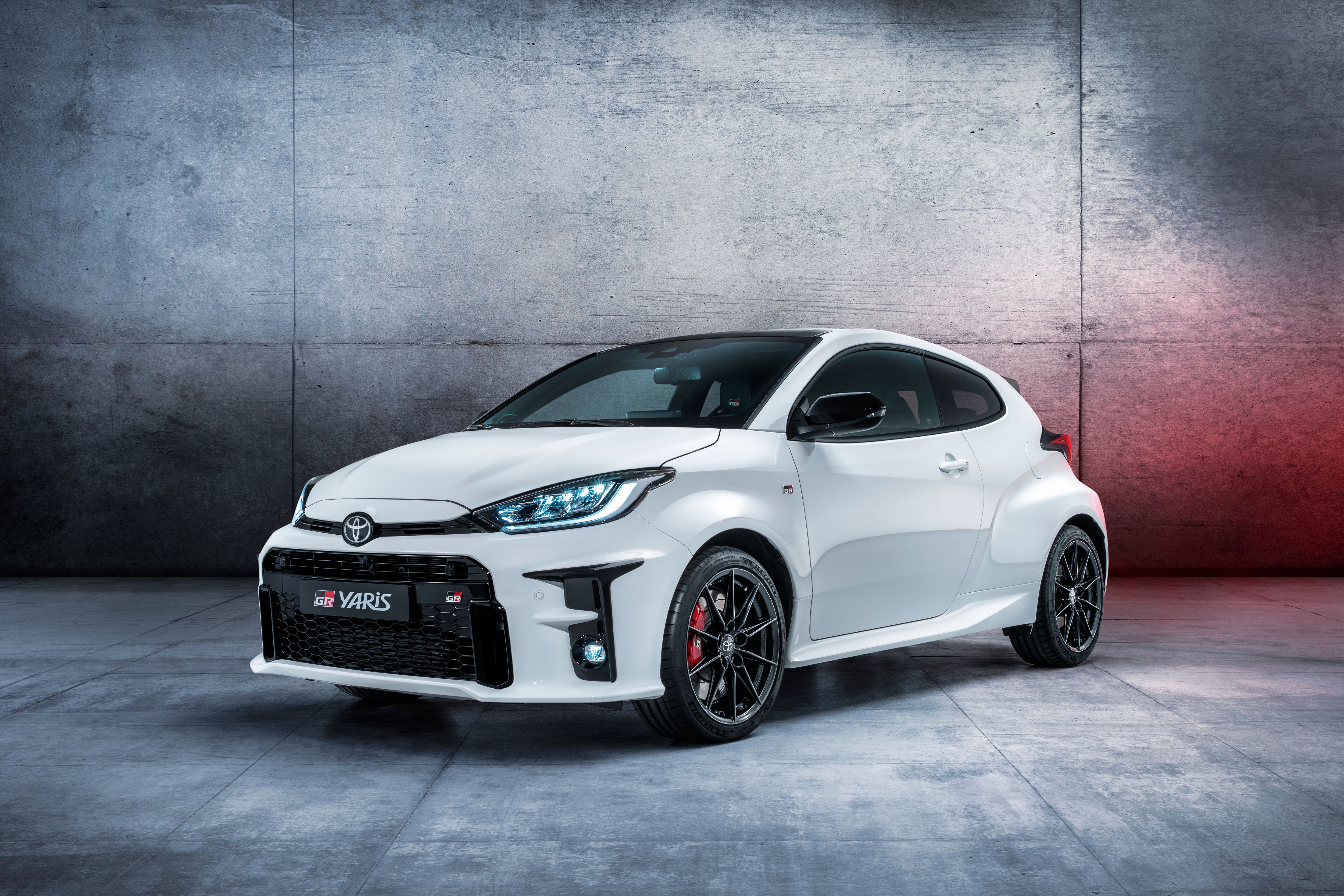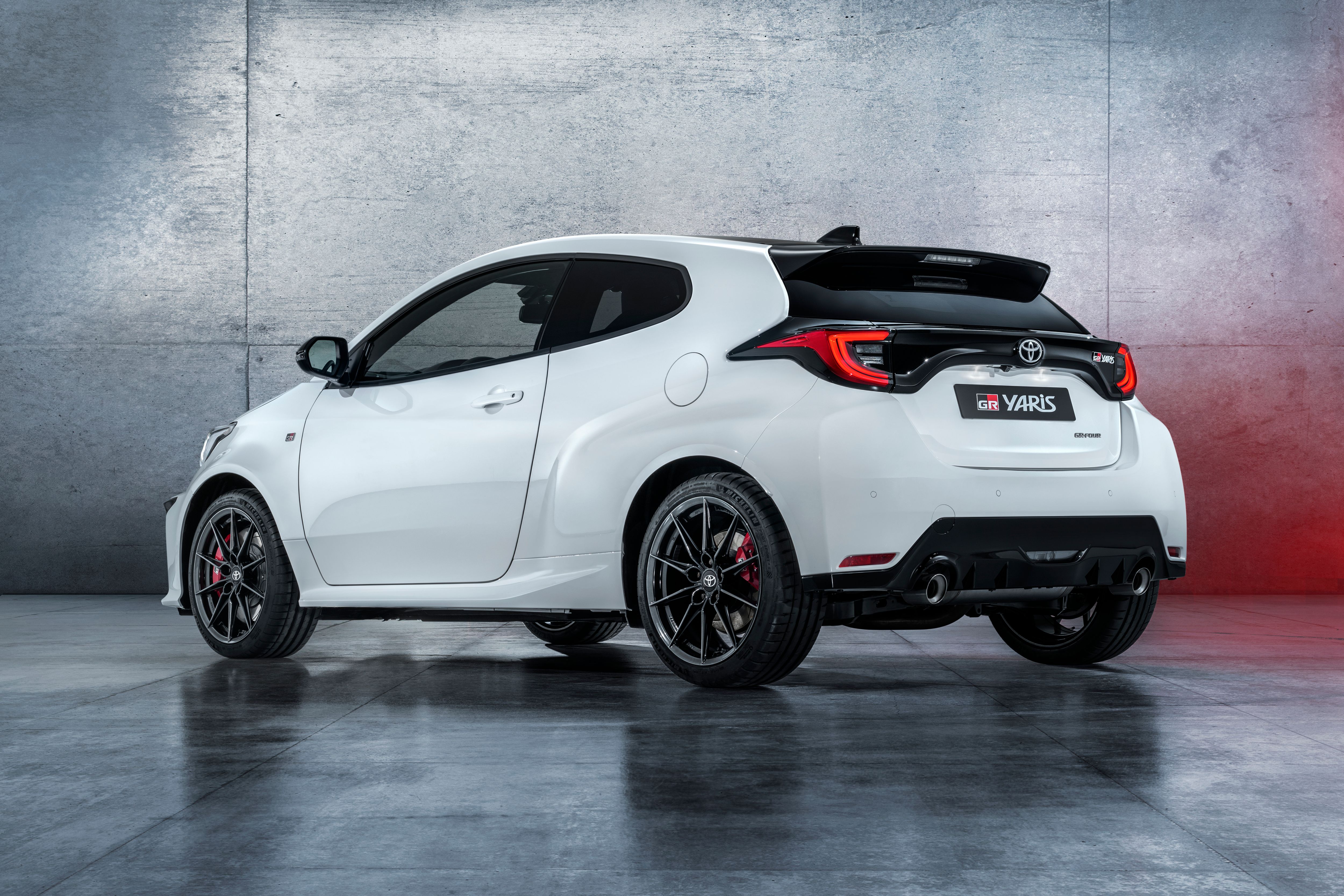Hot hatchbacks have been around since the 1970s and, for the most part, have enjoyed great success. This is especially true in our time when they almost caused the extinction of an entire segment – the compact front-wheel-drive coupes. The hot-hatch has proven to be a versatile and fun vehicle, which is the main reason why they are so popular. And while the U.S. car market is one of the biggest and most important in the world, Americans have missed out on some epic hot hatchbacks - like the ones I've listed below.
Alfa Romeo 147 GTA
It probably isn’t a good idea to set the bar so high from the start, but the Alfa Romeo 147 GTA is so epic, we had to start with it. The hot version of the Alfa Romeo 147 was launched in 2002 and was made right until the front-wheel-drive hatchback was discontinued, in 2010. It was, by no means, a perfect car, as the suspension and brakes left something to be desired. The fact it had an open differential, instead of an LSD also contributed to the vast amounts of understeer, torque-steer, and all kinds of “undesirable steer”.
Of course, you could mend that by upgrading the above-mentioned aspects, which is what most (if not all) owners have done. On to the main reason why this is one of the greatest hot-hatches – the engine. Responsible for the car’s tire-shredding capabilities is the 3.2-liter Busso V-6 engine, which makes 250 horsepower at 6,200 RPM and 221 pound-feet (300 Nm) at 4,800 RPM. This is enough for a 0 to 60 mph time of 6.3 seconds and a top speed of 153 mph (246 km/h).
Alfa Romeo 147 GTA specifications
|
Engine |
3.2-liter Busso V-6 |
|---|---|
|
Power |
250 HP @ 6,200 RPM |
|
Torque |
211 LB-FT @ 4,800 RPM |
|
0 to 60 mph |
6.3 seconds |
|
Top Speed |
153 mph |
The throaty V-6 is named after Ferrari and Alfa Romeo engineer Giuseppe Busso. The Busso engine actually dates back to the 1970s and is based on a proven racing design. The Alfa Romeo 147 is one of the last cars to feature the legendary V-6 unit.
Read our full review on the Alfa Romeo 147 GTA
Honda Civic Type-R EP3
Whilst the 147 GTA relied on displacement and torque, the Civic Type-R EP3 relies on a high-revving 2.0-liter K20 engine. The engine had a redline of 8,250 RPM and depending on whether it’s the Euro or JDM spec, it made 200 or 215 horsepower at 7,400 RPM and up to 148 pound-feet (202 Nm). This was enough for a 0 to 60 mph (97 km/h) time of 6.4 seconds and a top speed of 150 mph (242 km/h).
We included the EP3 instead of the older EK9 generation because they are still affordable. That said, it’s about to change, which means the odd-looking FN2 generation could be the next hot-hatch bargain on the used car market if you don’t live in the US that is. Moreover, despite its understated looks, the EP3 has an independent suspension all-around, while the futuristic-looking FN2 that succeeded it, is powered by basically the same engine and features a torsion-beam rear suspension.
Honda Civic Type-R EP3 specifications
|
Engine |
2.0-liter K20 |
|---|---|
|
Power |
200 HP @ 7,400 RPM |
|
Torque |
148 LB-FT |
|
0 to 60 mph |
6.4 seconds |
|
Top Speed |
150 mph |
Toyota Corolla TS (TTE) Compressor
If you are from the US, you’d know about the Toyota Corolla TS compact sedan, equipped with the high-revving, normally-aspirated 2ZZ VVTL-I engine. For the US the engine puts out 170 horsepower and around 133 pound-feet (180 Nm). Europe got the hatchback version of that, but with a Lotus software, which bumped the horsepower to 192. This was enough for a rather mediocre 7.7-second 0 to 60 mph time and a top speed of 140 mph (225 km/h).
However, it was the UK that got the most powerful version of the Corolla TS. Based on the Euro-spec T-Sport (TS), the 2ZZ engine was equipped with a supercharger, which resulted in 224 horsepower and 170 pound-feet (230 Nm). This resulted in a 0 to 60 mph (97 km/h) time of 6.9 seconds and a top speed of 146 mph (235 km/h). As with other hot versions of the Corolla, power went to the front axle through a six-speed manual. Sadly, the model was limited to the UK market and only 250 examples from the supercharged Corolla were made.
Toyota Corolla TS Compressor specifications
|
Engine |
normally-aspirated 2ZZ VVTL-I |
|---|---|
|
Power |
170 HP |
|
Torque |
133 LB-FT |
|
0 to 60 mph |
7.7 seconds |
|
Top Speed |
140 mph |
Renault Clio RS 182 Trophy
French carmakers are known for making fun little cars and the Clio RS 182 Trophy might be the ultimate example of that. Based on the normal Clio Mk II 182, the 182 Trophy was the last version of the second-generation Clio, before the bigger and heavier third generation came out. The Trophy was more track-focused than the standard car featuring bespoke wheels, 2.87 pounds (1.3 kg) lighter than those on the standard car. Among other things, it also features Recaro bucket seats, mounted 10 mm lower.
You want figures so here goes. The Clio 182 Trophy is equipped with a 2.0-liter, normally-aspirated, inline-four that makes 182 horsepower and 148 pound-feet (201 Nm). Since the car weighs in at just 2,403 pounds (1,090 kg), this is enough for a 0 to 60 mph (97 km/h) time of 6.6 seconds on its way to 140 mph (225 km/h) top speed. You also get a close-ratio six-speed manual gearbox. To this day, even the standard Clio 182 is a preferred track-day car, by many.
The 182 Trophy is a rare little beast even in Europe since very few were made. While 500 right-hand-drive versions were built or the UK, only 50 left-hand-drive cars were allocated for Europe.
Renault Clio RS 182 Trophy specifications
|
Engine |
2.0-liter, normally-aspirated, inline-four |
|---|---|
|
Power |
182 HP |
|
Torque |
148 LB-FT |
|
0 to 60 mph |
6.6 seconds |
|
Top Speed |
140 mph |
Ford Focus RS500
This could be a contender for the craziest hot hatchback on the list. With this car, it seems Ford has tried to answer a question: how much power can you really send to the front wheels? The RS500 is based on the second-generation Focus RS, which is the meaner version of the Ford Focus ST. Regardless, of the version, all hot versions of the second-generation Focus used a Volvo-derived 2.5-liter turbocharged inline-five engine.
While in the Focus ST it made around 230 horsepower, the RS put out 305 horsepower. Apparently, that wasn’t enough so the RS received a bigger intercooler, new software, fuel pumps, better intake, and a new exhaust, thus becoming the RS500. If Darth Vader was on the market for a hot-hatch, this is the one he would have bought. The inline-five engine now produced 350 horsepower and 339 pound-feet (460 Nm).
A six-speed manual was the only option (as it should be). Despite being extremely hostile towards the tires (especially the front ones), the RS500 was capable of a 0 to 60 mph (97 km/h) time of 5.4 seconds on its way to a top speed of 165 mph (266 km/h). All Focus RS500 were finished in “Panther black”, after which a special film was added to achieve the matt effect.
Ford Focus RS500 specifications
|
Engine |
2.5-liter turbocharged inline-five |
|---|---|
|
Power |
350 HP |
|
Torque |
339 LB-FT |
|
0 to 60 mph |
5.4 seconds |
|
Top Speed |
165 mph |
Read our full review on the Ford Focus RS500
Volkswagen Scirocco R
There is a bit of a debate regarding the third-generation VW Scirocco, produced between 2008 and 2017. Some say it’s a coupe, while others are adamant, it’s a hatchback. Be it as it may, the car lacks the traditional three-box design associated with coupes of the past. Scirocco is the sportier, less practical version of Golf. It’s built on the same A5 platform used for the VW Golf, Eos, and Seat Leon Mk II.
The Scirocco R is based on the GT24 racecar and uses a de-tuned version of the same 2.0-liter turbocharged inline-four. The exact same engine is used in the Golf R Mk VI and produces 265 horsepower and 258 pound-feet (350 Nm). Unlike the Golf R, however, power went to the front wheels only. The Scirocco R could be had with a six-speed manual or a six-speed wet-clutch DSG unit, with the same number of gears.
The Golf R was reportedly capable of reaching 60 mph (97 km/h) in as little as 5.1 seconds, while the top speed was limited to 155 mph (250 km/h).
Volkswagen Scirocco R specifications
|
Engine |
2.0-liter turbocharged inline-four |
|---|---|
|
Power |
265 HP |
|
Torque |
258 LB-FT |
|
0 to 60 mph |
5.1 seconds |
|
Top Speed |
155 mph |
Read our full review on the Volkswagen Scirocco R
Renault Megane RS 300 Trophy
Like the Clio 182 Trophy, the Megane RS 300 Trophy is based on the “lesser” RS 280 Sport/Cup. This generation of the Megan RS in general shares an engine with the Alpine A110S. French cars have always prided themselves on being comfortable and although the RS300 Trophy is the harshest of all Megane RS versions, it still offers quite a bit of adjustability. For example, you get five different driving modes – Comfort, Neutral, Sport, Race, and Personal.
With a curb weight of at least 3,102 pounds (1,407 kg), the Megane RS 300 Trophy is relatively heavy for a front-wheel-drive hatchback. However, it more than makes up through high-tech. The car comes with torque vectoring by braking and a mechanical Torsen limited-slip differential. You also get rear-wheel steering, where the rear wheels can turn up to 2.7 degrees. Aside from the bigger, 19-inch, wheels, and even firmer suspension, the RS 300, receives a bump in power.
The 1.8-liter turbocharged inline-four puts out 296 horsepower and 310 pound-feet (420 Nm). This allows the French hot-hatch to reach from 0 to 60 mph (97 km/h) in around 5.4 seconds and a top speed of 158 mph (260 km/h). You can have it either with a six-speed manual or a six-speed EDC (dual-clutch) automatic…if you are in Europe that is.
Renault Megane RS 300 Trophy specifications
|
Engine |
1.8-liter turbocharged inline-four |
|---|---|
|
Power |
296 HP |
|
Torque |
310 LB-FT |
|
0 to 60 mph |
5.4 seconds |
|
Top Speed |
158 mph |
Read our full review on the Renault Megane RS 300 Trophy
Hyundai i30 N
This isn’t really a big loss, because two very similar Hyundai models are on sale in the US. The Elantra N, which is basically an i30 sedan, and the smaller Hyundai Veloster N, both of which share an engine with the i30 N. That said, the i30 recently got a facelift, and with it, its more performance-oriented version – i30 N.
The mighty Korean hatchback still comes with the same 2.0-liter turbocharged inline-four engine, but it now puts out 280 horsepower and 289 pound-feet (392 Nm). They still go to the front wheels only, through either a six-speed manual or an eight-speed dual-clutch automatic. This is enough to motivate the i30 N to 60 mph (97 km/h) in just 5.2 seconds on to a top speed of 155 mph (250 km/h).
Hyundai i30 N specifications
|
Engine |
2.0-liter turbocharged inline-four |
|---|---|
|
Power |
280 HP |
|
Torque |
289 LB-FT |
|
0 to 60 mph |
5.2 seconds |
|
Top Speed |
155 mph |
Read our full review on the Hyundai i30 N
Renault Clio V-6
The Clio V-6 really stretches the definition of what can be considered a hot hatchback. Sure, it’s based on the Renault Clio, but because they stuffed the engine to the back, where you would usually find the rear seats and a decent (for the size) cargo area, you now get a 3.0-liter V-6 lump. A very good-sounding lump. As a result, the Clio V-6 was fitted with a wide-body kit that made it look like a street-legal GT4 race car. To be exact, it was 170 mm (6.7 inches) wider than the next sportier version – the Clio 182 Trophy.
Unlike most modern hatchbacks, where you are spoiled for choice when it comes to the gearbox, the hardcore Clio V-6 only came with a six-speed manual (as it should). The 3.0-liter V-6 in earlier cars can be traced back to earlier PRV (Peugeot-Renault-Volvo) units. It developed 230 horsepower at 6,000 RPM and 221 pound-feet (300 Nm) at 3,750 RPM.
For the facelift, Renault approached Porsche, which spawned one of the most unexpected collaborations with the German brand. As a result, the same 3.0-liter V-6 now developed 250 horsepower. The torque figure remained the same as before, but the 0 to 60 mph (97 km/h) time was dropped to about 5.4 seconds. The top speed was a very respectable 152 mph (245 km/h).
Even in Europe, these are quite rare, since a total of 2,824 cars were built – 1,513 Phase I cars and 1,309 Phase II. There was also a race version called the Clio V-6 Trophy, which competed in a single-make series. Only 159 of them were built.
Renault Clio V-6 specifications
|
Engine |
3.0-liter V-6 |
|---|---|
|
Power |
230 HP @ 6,000 RPM |
|
Torque |
221 LB-FT @ 3.750 RPM |
|
0 to 60 mph |
5.4 seconds |
|
Top Speed |
152 mph |
Toyota GR Yaris
While the latest XP210-generation Yaris is sold as a five-door hatchback only, due to the diminishing popularity of three-door hatchbacks, the GR Yaris came exclusively with a three-door bodywork. Akio Toyota felt that the brand needed to be represented in the WRC, but in order to do that, 25,000 street-legal versions had to be built. Those 25,000 cars were the GR Yaris.
The GR Yaris is one of the smallest cars on the list, but it’s also one of the quickest. The reason? All-wheel drive. Needless to say, this allowed the sub-compact rally-inspired hot hatchback to decimate more powerful hot hatchbacks and other sports cars on the quarter-mile. Credit for that also goes to the 1.6-liter turbocharged inline-three unit, which puts out 268 horsepower and 273 pound-feet (370 Nm). It also sounds like a half V-6, which is awesome.
This translated into a 0 to 60 mph (97 km/h) time of 5.1 seconds and a top speed of 144 mph (233 km/h). Also important are the gearbox options. There’s only one – a six-speed manual. Speaking of high-performance sub-compact hot hatchbacks, the GR Yaris’ predecessor the Yaris GRMN also wasn’t available in the US. It was based on the previous generation and was powered by a 1.8-liter supercharged inline-four that put out 212 horsepower and 184 pound-feet (250 Nm). Despite being front-wheel-drive only, it still managed a 5.9-second 0 to 60 mph time.
Toyota GR Yaris specifications
|
Engine |
1.6-liter turbocharged inline-three |
|---|---|
|
Power |
268 HP @ |
|
Torque |
273 LB-FT |
|
0 to 60 mph |
5.1 seconds |
|
Top Speed |
144 mph |
Read our full review on the Toyota GR Yaris

